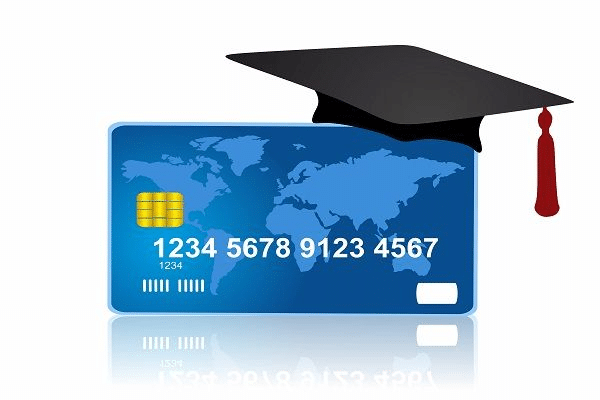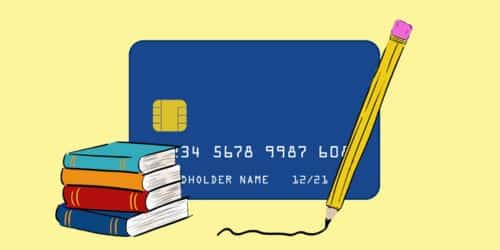Tertiary education is expensive anywhere in the world and except for trust fund babies or kids from rich homes; almost every student needs financial aid. This financial aid can be gotten from a government grant, scholarship, or student loan.
These days, people no longer move around with cash, this is because financial transactions can be made with the aid of technology. There are different ways through which people can carry out their daily expenditures. One of the most popular means is credit and debit cards.
In this article, we will discuss credit cards and how it works for students.
Basics of Credit Cards
A credit card is a thin metallic plastic that’s infused with technology that allows the user to carry out financial transactions. These cards are issued by banks or financial institutions and there are terms and conditions that come with them.
Basically, these cards allow the holder to borrow money for the purchase of goods and payment for services. The agreement between the issuer and the holder is that the money borrowed will be paid back at a later date with interest. This ‘ plastic money’ as these cards are also called can be used for financial transactions both online, offline, and over the phone.
How Credit Cards Work
When a consumer applies for a card, the issuer will look at the income of the person, their financial history, and some other factors. Meeting the stated requirements will increase the chance of approval and also the credit limit. This limit is the maximum amount that the holder of the card can borrow.
Once a person is approved for this financial instrument, the consumer will be issued a physical card with a unique number. It is that number that the consumer will use for their transactions.
Every “plastic money” has a billing cycle; this is the duration between monthly statements. You can use the card for your financial transactions during the billing cycle and must not exceed the maximum balance approved. At the end of the billing cycle, the issuing company will send a statement to the consumer. Check out this site for more information on billing cycles: https://www.experian.com/
This statement will most often show the consumer the balance, the minimum payment that they have to make, and the due date. You can either decide to pay off the stated balance in full or pay the minimum as stated in the notice sent to you. Paying the minimum means that you will carry over the balance to the next billing cycle.
Carrying a balance on your card incurs interest on the amount owed. This interest rate known as APR (Annual Percentage Rate) varies based on the issuer and the creditworthiness of the cardholder. This is why consumers are advised to pay attention to the APR offered by the issuing company as this affects how much interest rate they will pay.
Additionally, this ‘ plastic money’ also comes with some fees that include foreign transaction fees, balance transfer fees, and annual fees. So it is very important that consumers understand every fee and terms and conditions of any particular card before they apply for it.
Requirements for Approval for Credit Cards

There are general requirements for one to get approved for a credit card. However, each issuing company has slight variations to their requirement list but in this segment, we will share only the general basic requirements:-
Credit History
This is a record of financial transactions and it shows how you have managed your finances. Issuing companies of ‘plastic money’ will usually look at the credit score of the applicant. This score is a representation of a person’s creditworthiness and it is based on how the person uses credit, how long the accounts have been in existence, and the payment history.
Income of the Applicant
The income of the applicant shows the issuer whether the applicant has the capacity to repay or not. Most times, issuers request for verifiable proof of income which may be pay slips or tax returns.
Employment Status
Most issuing companies do not have the confidence to issue cards to unemployed folks. This is why they would consider the employment status of the applicant during the evaluation of the application. People with a stable and consistent source of income are more attractive to these companies and more likely to be approved for cards.
Debt-to-income Ratio (DTI)
A person’s DTI ratio is a measure of debt in relation to income. Issuers will look at how much a person has left for living expenses after they make their monthly payments (for debt repayments). This will help them determine whether the applicant has the capacity to repay if given more credit.
Payment History
This is a report on how you handle other financial instruments such as consumer loans. Issuers will consider how diligent you are to service the loans you have and honor other financial obligations. This will determine whether you will get approved or not. People with a history of missed or late payments do not stand a good chance of being approved.
Age
Like we all know, 18 years is the age where one is considered legal. This is also the age where one can apply for ‘plastic money’ as an individual entity. Some issuing companies do not even consider anyone who is below 21 years. In the same vein, an applicant without income (uten inntekt) is not likely to be considered. However, with a co-signer joined in the application, the request may be approved.
Residency Status/Citizenship
Most issuing companies require that the applicant be resident in the country in which they are applying from. This means that proof of citizenship or permanent residency has to be presented.
How Can Students Get Approved For Credit Cards?

Looking at the requirements that we stated above, it might seem that it will be difficult for students to get approved for credit cards. This is because apart from the legal age, many students might not meet the requirements. Thankfully, however, there are issuers that have specialized cards for students.
Student credit cards work just like regular cards but the difference is mainly in the credit limit that it comes with. Additionally, the requirements for qualification are not as stringent as regular cards.
Apart from these specialized students’ cards, there are some things that a student can do to improve their chances of being approved for a card. Below are tips to consider:-
Build Your Credit History
It is difficult to get approval for this financial instrument without a credit history. So you need to start building credit; this can be done by applying for a secured credit card. You can also become an authorized user on the credit card of someone else. With these, you’ll be able to build creditworthiness by making monthly payments on time and also keeping your balances low.
Apply for a Student Credit Card
We have mentioned that there are issuers that have specialized cards for students. These cards would usually have lower credit limits and also fewer rewards than other types of cards. They are good options for students to build credit and also learn how to responsibly use ‘plastic money
Have Proof of Income
Many students either work part-time or have other sources of income. Some others are also involved in a work-study program. Therefore, it is expedient that such students have verifiable proof of these incomes. This will help improve the chances of getting approved.
Consider Using A Cosigner
As a student, you may not have the required credit history or level of income to qualify for ‘plastic money’ of your own. Therefore, it may be in your best interest to apply for a card with a co-signer. A co-signer is someone who is willing to take responsibility for repaying your debt in case you default. This person, however, must meet all the criteria as requested by the issuing company.
Factors to Consider Before Choosing a Student Credit Card

There are a number of factors to consider before applying for any particular card. They include but not limited to the following:-
- Your credit score – if your credit score is low or you have limited or no credit history, you will do well to look out for a student card that is designed specifically for consumers in your circumstance.
- Rewards – Although most student cards do not come with as much rewards as the regular ones, you can still find some that come with some rewards. These rewards include points, cash back, and miles. Consider your spending habit and interest and choose a card with rewards that align appropriately.
- Fees- Make sure you find out all the fees that come with the card so that you know which one works best for you.
- Credit Limit – This is a very important feature to consider. It wouldn’t do to go for a card with a maximum limit that cannot cater to your living expenses.
- Interest Rate – Look out for interest rates that make the ‘plastic money’ worth it. The interest rate determines how ‘cheap’ or ‘expensive it will be to carry a balance on your card.
- Security Features – Ensure that the card you choose has security features such as fraud protection and grants you zero liability for charges that you did not authorize.
- The Reputation Of The Issuer – This is a very important factor as it will determine the quality of service that you will get.
Conclusion
We mentioned earlier that students need all the financial help that they can get. That is why we have taken time to discuss one means of financing which is student credit card. We believe that the tips we have shared here will help you make an informed choice and get the full benefit of this financial instrument.






